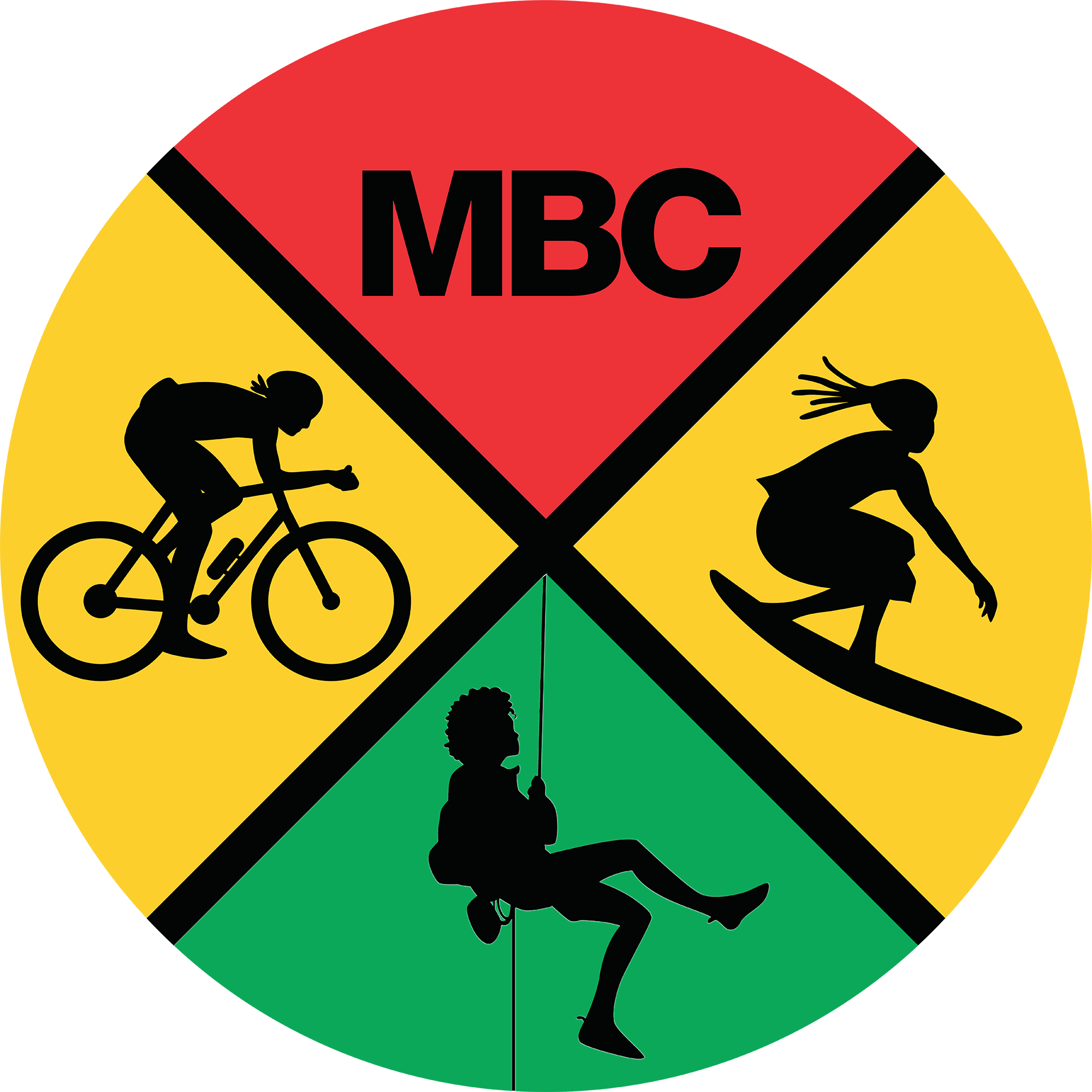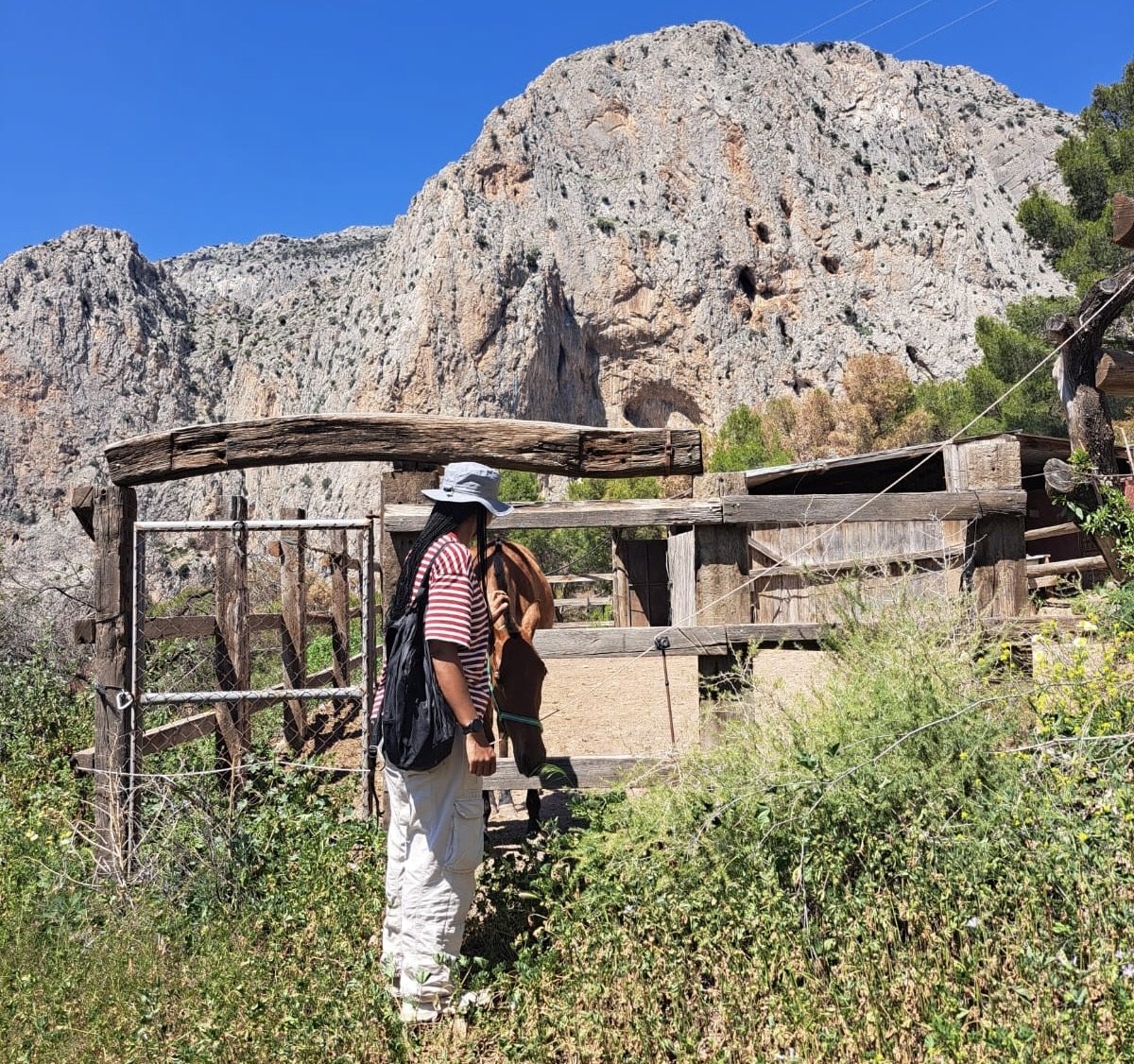3 Benefits of Aging in Adventure Sports
Evan focuses on placing his foot carefully on a small foothold as he climbs an overhanging limestone wall. (Photo credit: Sheena Hau)
Let’s face it! Outdoor culture focuses on performance and youth, creating a false image of what it means to get outside. Less is known about what it really means to grow older in adventure sports. There’s a popular belief that you have to sacrifice your entire life, or start very young. The reality is more complex. It’s true that for some, participation in outdoor sports may change as you age. I interviewed several people, in their 30s, 40s and 50s, who are redefining their goals by prioritizing health over fitness, embracing new opportunities, and building supportive communities.
“You have to take care of your body if you want to keep doing sports that are really physically demanding.”
Listen to Your Body
Shelma Jun sitting lakeside. (Photo credit: Alexis Krauss)
Shelma Jun, the founder of Flash Foxy, a climbing community creating events and educational programs for women and genderqueer climbers, is now seeing the benefits of adding cross training, strength training, and recovery to her workouts. Over time, Jun has also shifted her priorities. “I think in the beginning, it was really just like continuing to push my limits to see how far I could go.”
Then external events like COVID-19 and donating a kidney caused her to take a break from climbing for several months.
“It just sounds so cliche to say this, but like, your body is just not as durable,” Jun said about aging in adventure sports. “You have to take care of your body, if you want to keep doing sports that are really physically demanding.”
Semi-pro climber Evan Hau, 37, began rock climbing 19 years ago and had never dreamed of climbing a 5.14 grade. As a beginner in the sport, his main goal was to practice as often as he could. “I used to climb every day if possible, with my record being 32 days in a row in 2012,” he said. “As I've grown older, I can't climb every day like that anymore. I have to be more strategic about my rest days and maximizing my days out.”
Danielle Williams, 37, began skydiving in her twenties and later co-founded Team Blackstar Skydivers, an organization for skydivers of color. After becoming permanently disabled at age 30, she sought out activities that were not as high risk, like hiking. Currently, she’s part of an adaptive rowing program that focuses on disabled individuals. “I like how we're all dependent on other people, and skydiving is kind of the opposite,” she reflected.
Even though Williams still skydives, it occupies less space in her life and she’s satisfied with that outcome. “The challenges you have in your twenties are not the same as in your thirties and forties,” she added. “[Thinking] that we would keep that same level of involvement forever, and that it would never change—I think that's just not realistic.” Over time her disability has also pushed her to do a better job of listening to her body. That often means prioritizing rest and recovery over fitness goals.
Rebecca Ross on Mt. Kazbek. (Photo credit: Alper Gunay)
2. Stay Resilient and Look for New Opportunities
Rebecca Ross, 36, has been mountaineering since 2017. Her hardest climb was the 16,580 ft Mount Kazbek in Georgia. Initially, she had a lot of eagerness for climbing. “It was more peakbagging,” she reflected. “I had just graduated from grad school, and […] I needed a break, and climbing was a great reprieve.” As Ross progressed, she shortened knowledge gaps and became a more competent climber, while also taking advanced courses in safety. The experience boosted her confidence and helped her become more self-assured.
Then in 2019, Ross went through a divorce and started a new position in Vancouver, Washington. She moved three times in two years, living a semi-nomadic life, while traveling back and forth between Washington and Alaska on assignments for the American Alpine Institute. The constant upheaval eventually led her to leave mountaineering. “The cost of traveling and eventually breaking a toe, threw in so many challenges to continue,” she said. “It just kind of phased out.”
Facing hurdles sometimes means reevaluating your participation in a sport or outdoor community. For Ross, the decision to leave mountaineering led to a new opportunity and the chance to view her passion through a different lens.
Combining photography and writing with mountaineering was “pure accident,” for Ross, who initially carried a Nikon D 7200 for personal use. Eventually, her photos caught the attention of friends, and spurred organizations to hire her as a freelance photographer. “I think it was new for a Black woman to be climbing so many mountains at the time,” said Ross. Her experiences led to opportunities to write gear reviews and trip reports, eventually paving the way towards working on a book about her years spent traveling and mountaineering.
Unforeseen events, like COVID can force athletes to change their routine, and sometimes those changes bring about new lessons that improve skills.
Hau was used to climbing with others, but the pandemic forced him to climb exclusively with his wife, which he continues to do. “It's been great supporting each other and seeing each other progress,” he said. “We know each other's tendencies very well and are able to coach each other.”
Athletes not only have to contend with technical aspects of their sport, but also find a way to remain financially afloat.
Hau has managed to structure his job around climbing, working as a private tutor for math and science. “It gives me a lot of free time to climb during the peak summer season in The Bow Valley,” he said. “And during the school year, it works well to climb during the day and tutor in the evenings.”
Shawn Brokemond, 55, coaches women over forty through her small business, Sports Adventure. Her mission is to help women build strength and confidence, by adding adventure to their lives, everything from lifting weights to mountain biking. Some of her clients are dealing with growing responsibilities at home that can cause them to feel risk-averse, and less willing to try new outdoor activities. “They feel like they've just slowed down a lot, or they don't have the energy after [having] kids,” said Brokemond.
Brokemond knows something about taking risks. After 25 years, she made a career shift from teaching kindergarten to coaching at 39. Although she always had a thirst for adventure, she began competing in triathlons in her late 30s and started BASE jumping off 3,000-foot cliffs in Europe in her 40s. She recently returned to surfing after a 30 year break. Brokemond wants to bring that sense of curiosity and excitement to her clients. “They feel a little bit more invincible,” she added. “It helps them in so many other aspects of their life. Not just in doing physical stuff, but with their job, or empowering them to lead adventures with their kids.”
3. Find a Supportive Community
Over time, staying active in any sport becomes more about finding a supportive community than just completing goals. Longevity in any sport is often influenced by the strength of your friends. They are there to help boost your confidence and welcome you back after you take time off.
“For me, it's not enough anymore to be able to check off boxes and say, ‘Okay, I have a shiny new skill,’” said Williams. “Even if it makes me feel confident, or if it's, like, personally empowering. I really care much more deeply about community and relationships.”
Coaching older women has broadened Brokemond’s mind in other ways. She recently went on a trip to Colorado with her 80-year-old parents. “I just hadn't thought about it before, like starting to do adventures with my parents,” she reflected. “My dad goes fishing on his own, but now he's less inclined to go places. And, I want to show him more than just his backyard.”
For Ross, it became a challenge to find climbing groups, after leaving Portland, Oregon. “My perspective started changing and my values,” she said. “Coupled with so many moves, I just physically and figuratively moved away from my climbing community.”
Ross is taking her time finding a new activity she’s passionate about. “I would love to try to find a water sport, because I enjoy the water so much,” she mentioned. “And, it’s so different from mountaineering.”
Despite going back and forth between California and New York, Jun has a stable climbing community. “I just feel really lucky, because I know a lot of people have trouble, especially when they move somewhere new,” she said. “Having developed those partnerships and friendships over the last decade, has allowed me to have the ability to reach out and connect.”























Summer is here and prices couldn’t be higher! Recession indicators are everywhere, federal student loan repayments are back on and rent is rising in major cities across the U.S. But you don’t want to spend all your time at home either. Here are eight ways to get outside for free (or close enough) while making friends, building community and learning new hobbies. Let’s go!